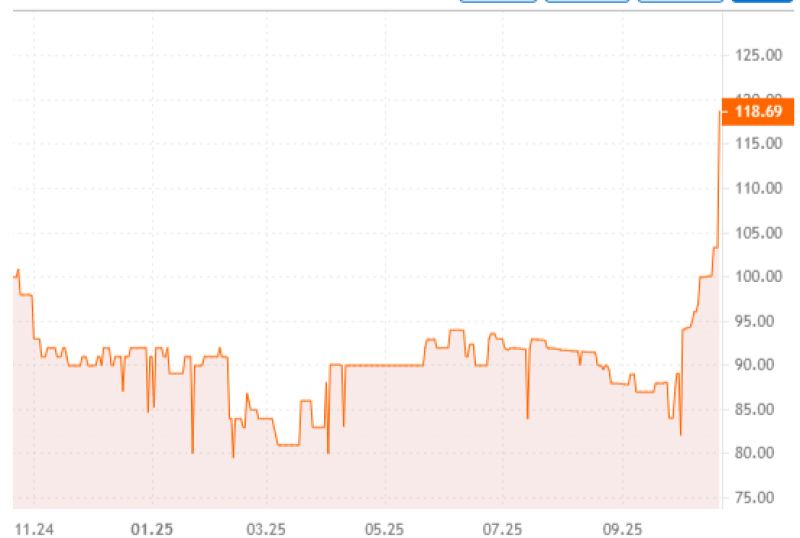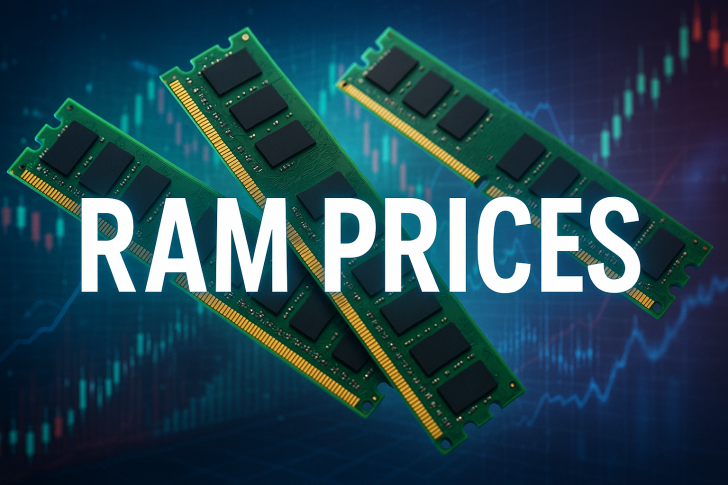The memory market has been anything but predictable lately. But recent data shared by industry observers shows a dramatic breakout that's sending ripples through the entire tech ecosystem. What's fueling this sudden surge? A combination of aggressive production cuts by memory makers, exploding demand from AI data centers, and the lingering effects of years of market oversupply correction. The timing couldn't be more significant—as artificial intelligence becomes the dominant force in tech infrastructure spending, memory chips have transformed from commodity components into strategic assets that companies are willing to pay premium prices to secure.
Why Prices Are Climbing Now
According to the chart shared by Lisan al Gaib RAM prices stayed relatively stable, lulling manufacturers and buyers into a sense of calm. The spike isn't random. Memory manufacturers like Samsung, Micron, and SK Hynix deliberately scaled back production over the past year to work through excess inventory that had been weighing down prices. Just as supply started tightening, demand exploded. AI companies are building massive training clusters that consume enormous amounts of high-bandwidth memory. Every new language model, every upgraded data center, every AI accelerator needs cutting-edge DRAM and HBM modules. NVIDIA's latest GPU shipments alone require thousands of memory chips per system. Google, Microsoft, and Amazon are racing to expand their AI infrastructure, and they're all competing for the same limited pool of advanced memory supplies. The market has shifted from oversupply to shortage faster than most analysts predicted.

Who's Feeling the Pressure
Consumers are already seeing the impact at checkout. DDR5 memory kits have jumped 10-20% in price across major retailers. Laptop manufacturers are quietly warning that system costs will likely rise heading into next year as component expenses climb. But the real pressure is hitting AI labs and cloud providers. High-performance memory now represents one of the biggest line items in training cluster budgets. When you're building systems with thousands of GPUs, even a 40% increase in memory costs translates to millions of dollars in additional spending. Smaller AI startups that were already struggling with compute costs are finding it even harder to compete with well-funded giants. Some are delaying planned model training runs or looking for ways to optimize memory usage more aggressively.
The Road Ahead
Don't expect relief anytime soon. Most industry analysts believe elevated prices will persist well into 2026. New production capacity takes time to bring online—Micron's Idaho facility and TSMC's Japanese fabs won't meaningfully impact supply until late next year at the earliest. Memory makers are in no hurry to flood the market after suffering through years of razor-thin margins. They're comfortable maintaining current production levels and enjoying healthier profits. Any unexpected disruption—energy shortages, geopolitical tensions, natural disasters—could push prices even higher. The market has become hypersensitive to supply shocks now that AI demand has added a new layer of urgency to an already tight situation.
 Usman Salis
Usman Salis

 Usman Salis
Usman Salis


